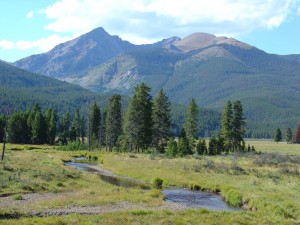Robert Burns famously wrote that “the best laid plans of mice and men, oft go awry.” Even well-crafted plans don’t always turn out as intended. But that isn’t the problem with most strategic plans in government these days. Rather, the problem is that so many “best laid plans” don’t go anywhere at all – awry or otherwise.
Congress just returned from its August recess, which they now refer to as a “district work period.” If their job is legislating, I’ve always wondered exactly what constitutes “work” when they are not in session, but that’s another column for another week. This week, the House and Senate have already begun talk about this fall’s legislative agenda, and planning another stop-gap “continuing resolution.” A “continuing resolution” is what Congress must pass to continue the operations of government at current levels IF it fails to pass the regular appropriation bills. That brings us back to the subject of good planning.
When Paul Ryan became Speaker of the House, a year ago next month, he announced plans to return Congress to “regular order.” That meant reinvigorating the committee system, and making sure all the regular appropriation bills get passed on time, as well as the annual budget. Those were truly big plans, considering Congress had passed almost none of the twelve annual appropriation bills for a decade, and no budget for the past five years. Instead, they had passed one “continuing resolution” after another, often waiting to the last minute and taking government to the brink of shutdown. His first month, Ryan convinced Congress to pass a major appropriation bill that had come through the regular committee process. Many of us were impressed, and thought with an entire year of his leadership in 2016, maybe they would return to debating each of the twelve regular bills, separately on its own merits – the best laid plans.
What a difference a few months makes – or not. Not a single one of the twelve bills has been enacted. Only one has made it through both Houses, though the final conference version remains deadlocked in the Senate. Nor have they adopted the 2017 budget. Speaker Ryan’s plans for regular order have apparently been supplanted by what has now become “business as usual.”
This erosion of the planning process in favor of ad hoc government is pervasive across the country, at the state and local level, too. Thousands of studies, white papers, and strategic plans – the result of untold hours of planning meetings, roundtables, and public hearings – sit unread, unimplemented, and irrelevant. We see it in everything from forest management to water planning. Americans attend over 220 million meetings a year, sometimes just to plan the next meeting.
At the annual summer conference of the Colorado Water Congress in Steamboat Springs, I spoke to attendees about the Colorado Water Plan. It was also adopted about a year ago after a decade of meetings, and announced by the Governor with appropriate fanfare. It calls for $20 billion worth of conservation measures, and a statewide conservation goal of 400,000 acre feet by 2050, an ambitious but reasonable goal. It also projects a water demand shortfall of 560,000 acre feet, proposing to reduce that shortfall to zero by 2030, by combining the conservation measures with construction of 400,000 acre feet of additional water storage. That has been desperately needed for a long time. It was a good process, and it is a good plan.Naysayers immediately seized on the fact that no specific funding source was agreed upon. There is not enough money, they said. But Denver’s transportation master plan calls for $133 billion by 2035, and water issues are every bit as serious. The problem with water is political will, not money. Most water districts today are afraid even to propose new projects, because of the predictable environmental opposition. Colorado’s last major reservoir project took 30 years.
A notable exception is the Rio Blanco Water Conservancy District’s plan to replace Kenney Reservoir, which is filling with silt and losing its capacity. The district has the ability not only to solve the water supply problem, but also to generate huge economic value in an area that can no longer rely on coal mining or oil. The project could also improve the environment, supply water for endangered fish, and build a whole new future in the Rangely area.
That’s what the State Water Plan was supposed to be about. Will the idea gather momentum, or join thousands of other strategic plans that sit on shelves gathering dust?
A version of this column originally appeared in the Grand Junction Daily Sentinel September 9, 2016.





Comments on this entry are closed.